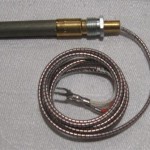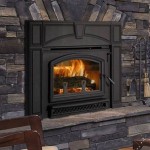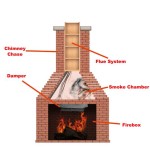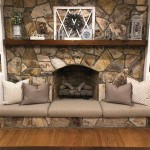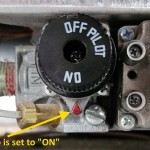Paver Fireplace Plans: A Comprehensive Guide to Design and Construction
Paver fireplaces represent a durable and aesthetically pleasing addition to outdoor living spaces. They provide a focal point for gatherings, offer warmth on cool evenings, and significantly enhance property value. Planning and constructing a paver fireplace requires careful consideration, from selecting the appropriate pavers and materials to adhering to safety guidelines and local building codes. This article offers a comprehensive guide to paver fireplace plans, covering design considerations, material selection, construction techniques, and safety precautions.
Understanding Paver Fireplace Design Considerations
The design phase is crucial in ensuring the paver fireplace meets functional and aesthetic requirements. Factors to consider include the fireplace’s size, style, location, and intended use. These elements will dictate the specific materials and construction methods needed.
Size and Proportions:
The size of the fireplace should be proportional to the surrounding space. A large fireplace in a small backyard can overwhelm the area, while a small fireplace in a large yard may appear insignificant. Consider the intended seating arrangement and the desired heat radius when determining the appropriate dimensions. A typical paver fireplace ranges from 6 to 10 feet wide and 4 to 8 feet tall, but these dimensions can be adjusted based on the available space and desired visual impact.Style and Aesthetics:
Paver fireplaces can be designed in various styles, ranging from rustic and traditional to modern and contemporary. The style should complement the existing architectural features of the house and the overall landscape design. Rustic designs often incorporate natural stone veneers and rough-cut pavers, while modern designs may feature sleek lines, smooth pavers, and minimalist details. Consider incorporating design elements that reflect personal taste and preferences.Location and Orientation:
The location of the fireplace should be carefully selected to maximize its functionality and minimize potential hazards. Avoid placing the fireplace near flammable materials such as trees, shrubs, and wooden structures. Consider the prevailing wind direction to minimize smoke exposure for occupants. Ensure the location complies with local building codes and setback requirements. Proper orientation can also enhance the fireplace's ability to provide warmth and create a comfortable outdoor environment.Fuel Source:
The choice of fuel source, whether wood-burning, propane, or natural gas, will influence the design and construction of the fireplace. Wood-burning fireplaces require a firebox with adequate ventilation and a chimney to exhaust smoke and gases. Propane and natural gas fireplaces require gas lines and appropriate burners and controls. The fuel source will also affect the required safety features, such as spark arrestors and gas leak detectors.Building Codes and Permits:
Before commencing construction, it is imperative to research and comply with all applicable local building codes and regulations. Most jurisdictions require permits for building fireplaces, and inspections may be required at various stages of construction. These codes typically address safety requirements, setback distances, and emissions standards. Failure to comply with building codes can result in fines, delays, and even the removal of the fireplace.Selecting the Appropriate Pavers and Materials
The selection of pavers and other construction materials significantly impacts the durability, aesthetics, and overall cost of the fireplace. Consider the following factors when choosing materials:
Paver Type and Quality:
Pavers are available in various materials, including concrete, clay brick, and natural stone. Concrete pavers are a popular choice due to their affordability, durability, and wide range of colors and styles. Clay brick pavers offer a classic and timeless aesthetic, while natural stone pavers provide a unique and natural look. The quality of the pavers is crucial for withstanding the high temperatures and weather conditions to which the fireplace will be exposed. Choose pavers that are specifically designed for outdoor use and are resistant to cracking, fading, and chipping.Mortar and Adhesive:
The mortar used to bind the pavers together must be heat-resistant and capable of withstanding the high temperatures generated by the fire. Refractory mortar is specifically designed for this purpose and is essential for the firebox. For areas outside the firebox, a high-quality masonry mortar is sufficient. In some applications, construction adhesive may be used to bond pavers, particularly for non-structural elements. Ensure the adhesive is suitable for outdoor use and can withstand temperature fluctuations.Firebox Materials:
The firebox is the area where the fire is contained, and it must be constructed with materials that can withstand extremely high temperatures. Firebrick is the most common material used for fireboxes due to its excellent heat resistance and durability. Firebrick is a type of refractory brick that is specifically designed to withstand temperatures exceeding 2,000 degrees Fahrenheit. The firebox should be properly insulated to prevent heat transfer to the surrounding structure.Chimney Materials:
The chimney is responsible for venting smoke and gases away from the fireplace. Chimneys can be constructed from various materials, including brick, stone, and metal. Metal chimneys are often used in prefabricated fireplace kits, while brick and stone chimneys offer a more traditional and aesthetically pleasing look. The chimney should be properly sized and constructed to ensure adequate draft and prevent smoke from entering the surrounding area. Consider using a chimney liner to protect the chimney from the corrosive effects of smoke and gases.Other Materials:
Additional materials needed for constructing a paver fireplace include gravel for the base, sand for leveling, and concrete for the foundation. Gravel provides drainage and stability, while sand creates a smooth and level surface for laying the pavers. A concrete foundation is essential for supporting the weight of the fireplace and preventing settling. Consider using rebar reinforcement in the concrete foundation for added strength and stability.Construction Techniques and Safety Precautions
Constructing a paver fireplace requires careful attention to detail and adherence to safety guidelines. The following steps outline the general construction process:
Preparing the Foundation:
The foundation is the base upon which the fireplace is built. Begin by excavating the area to the required depth, typically 6 to 12 inches. Install a layer of compacted gravel for drainage, followed by a layer of sand for leveling. Pour a concrete foundation, ensuring it is level and properly reinforced with rebar. Allow the concrete to cure for at least 7 days before proceeding with the construction.Building the Firebox:
The firebox is the heart of the fireplace and must be constructed with fire-resistant materials. Lay the firebrick using refractory mortar, ensuring the joints are tight and even. Construct the firebox according to the dimensions specified in the plans, paying close attention to the ventilation openings. Properly insulate the firebox to prevent heat transfer to the surrounding structure.Constructing the Walls:
Once the firebox is complete, begin constructing the walls of the fireplace using the selected pavers. Lay the pavers in a desired pattern, bonding them together with masonry mortar. Ensure the walls are plumb and level, and that the joints are consistent in width. Consider incorporating design elements such as arches, corbels, and decorative inlays. Reinforce the walls with metal ties or rebar for added stability.Building the Chimney:
The chimney is responsible for venting smoke and gases away from the fireplace. Construct the chimney according to the dimensions and specifications outlined in the plans. Ensure the chimney is properly lined to protect it from the corrosive effects of smoke and gases. Install a spark arrestor at the top of the chimney to prevent embers from escaping and causing fires. Consider using a chimney cap to prevent rain and snow from entering the chimney.Installing Gas Lines (if applicable):
If the fireplace is fueled by propane or natural gas, install gas lines according to local building codes and regulations. Hire a qualified professional to perform the gas line installation and ensure all connections are leak-tested. Install a gas shut-off valve for safety and convenience. Follow all manufacturer's instructions for installing the gas burner and controls.Safety Precautions:
Safety is paramount when constructing and using a paver fireplace. Wear appropriate personal protective equipment, such as safety glasses, gloves, and dust masks. Work in a well-ventilated area and take precautions to prevent exposure to dust and fumes. Keep flammable materials away from the construction site. Follow all manufacturer's instructions for using tools and equipment. Ensure the fireplace is properly maintained and inspected regularly for damage. Never leave a fire unattended and always extinguish the fire completely before leaving the area.By carefully considering these design considerations, material selections, and construction techniques, it is possible to create a beautiful and functional paver fireplace that will enhance any outdoor living space for years to come. Remember to prioritize safety and adhere to all applicable building codes and regulations.

How To Build An Outdoor Fireplace Step By Guide Buildwithroman

Outdoor Fireplace Design Ideas Getting Cozy With 10 Designs Unilock
:max_bytes(150000):strip_icc()/livingstonemasonary-154847150f2a49558b21b5a93d08dfc9.jpg?strip=all)
10 Free Outdoor Fireplace Construction Plans

How To Build An Outdoor Fireplace Step By Guide Buildwithroman
:max_bytes(150000):strip_icc()/milkpaint-286c9ee63b604ca1aaecac5233c8a3f3.jpg?strip=all)
10 Free Outdoor Fireplace Construction Plans

How To Build An Outdoor Fireplace Today S Creative Life
:max_bytes(150000):strip_icc()/chrisjulia-971f3f9eb708447bbd364fc7f4a16280.jpg?strip=all)
10 Free Outdoor Fireplace Construction Plans

Diy Outdoor Fireplace Kit Fremont Makes Hardscaping And Easy
:max_bytes(150000):strip_icc()/theshed-502c277988c14e118b4ad4f3cfc54a90.jpg?strip=all)
10 Free Outdoor Fireplace Construction Plans

How To Build An Outdoor Stacked Stone Fireplace
Related Posts



